Table of Contents
- What does UTV stand for?
- What does ATV stand for?
- Other names for UTVs and ATVs
- How are UTVs and ATVs different?
- How many people can you fit on an ATV?
- How many people can fit in a UTV?
- How different is driving a UTV from an ATV?
- Types of UTVs and ATVs
- Are ATVs or UTVs better?
- Are UTVs or ATVs better for hauling cargo?
- Is an ATV or UTV better for hunting?
- ATV vs. UTV: Which is better for off-roading?
- Riding UTVs in cold weather
- Are ATVs or UTVs safer?
- How much does a UTV Cost? How much does an ATV cost?
- Most popular UTV and ATV manufacturers
- Best UTV upgrades
- Choosing a UTV or ATV
What exactly is a UTV or ATV?
Which unit will suit your needs? Are ATVs or UTVs safer? What is the cost difference? SBSS knows how tough it can be to choose between vehicles.
Hunters, outdoors enthusiasts, farmers, ranchers, and extreme sports enthusiasts will be the first to tell you: ATVs and UTVs can offer some of the most enjoyable rides. But,it’s tough to know what will be best for you. We’ll help you learn the differences and similarities between UTVs and ATVs.
Today, we’ll cover significant differences between ATVs and UTVs by comparing the two vehicles side-by-side (pun intended) in these areas
- Features
- Benefits
- Safety
- Cost
But right now, let’s start with the basics.
What does UTV stand for?
UTV: Utility Task Vehicle
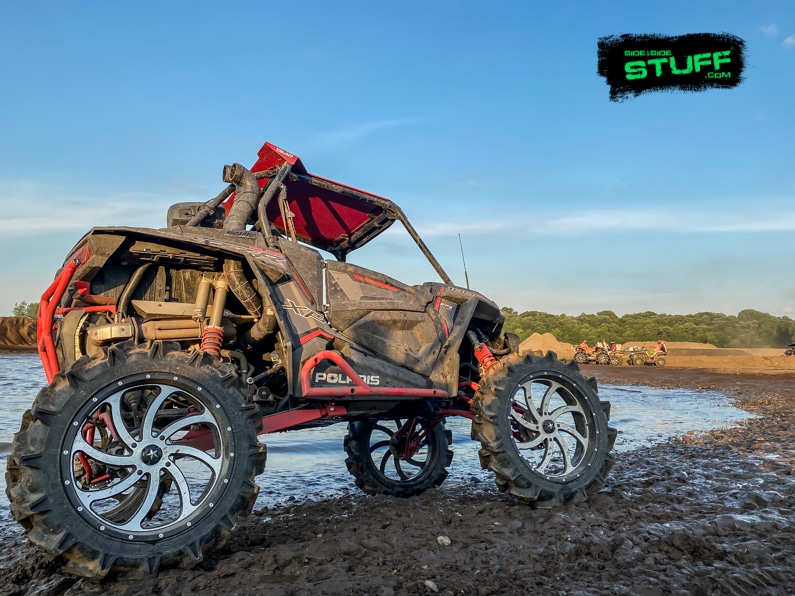
What does ATV stand for?
ATV: All-Terrain Vehicle
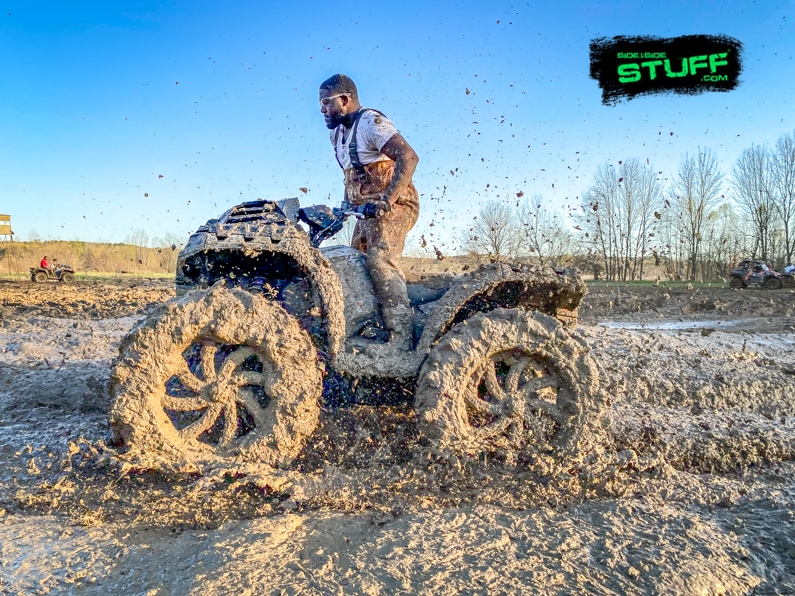
Other names for UTVs and ATVs
Like any other vehicle, ATVs and UTVs are called a lot of different things. Here’s a quick cheat sheet to know which is which:
UTVs
- Side by side
- SxS
- SBS
- Buggie
- Bike (in Southeast US)
ATVs
- 4-Wheeler
- Bike
- Quad
- Quadricycle
- Quad Bike
You might be thinking: Great. But what does that even mean? To be fair, the names don’t really tell you too much about them—much less differentiate the two. The most obvious difference between UTVs and ATVs is in the chassis (body of the vehicle) and passenger capacity.
How are UTVs and ATVs different?
ATVs ride more like a motorcycle, with a seat on the chassis the rider straddles. UTVs are more like a buggy or car, with passengers seated inside the chassis—rather than on it. This makes a big difference in rider capacity.

How many people can you fit on an ATV?
1-2 riders. Larger ATVs have a second seat directly behind the rider. For racing/extreme sports uses, it’s typically a single seat for one rider.
How many people can fit in a UTV?
1-6 riders. Like a car, there’s a variety of chassis styles for different numbers of riders. UTVs typically have room for two in front and two in a second row (potentially), and some accessories are available to attach rear-facing seats to add space for another two.
How different is driving a UTV from an ATV?
Even though the names are one letter off, the controls are very different. Once again, think motorcycle (ATV) vs. car or buggy (UTV).
ATV Build and Controls
- Acceleration – Thumb throttle
- Brake – handle or foot pedal
- Cab – open
- Seating – straddle seat
- Speed – 45-80 mph
- Tires – Low-pressure or non-pneumatic
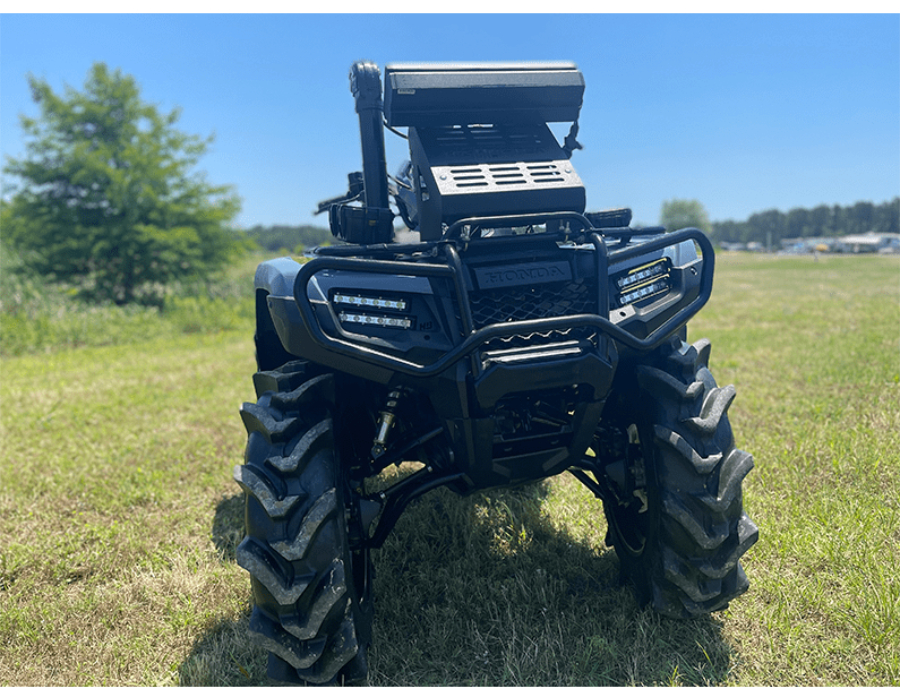
UTV Build and Controls
Acceleration – foot pedal
Brake – foot pedal
Cab – caged
Seating – suspended seats
Speed – 45-85 mph
Tires – any
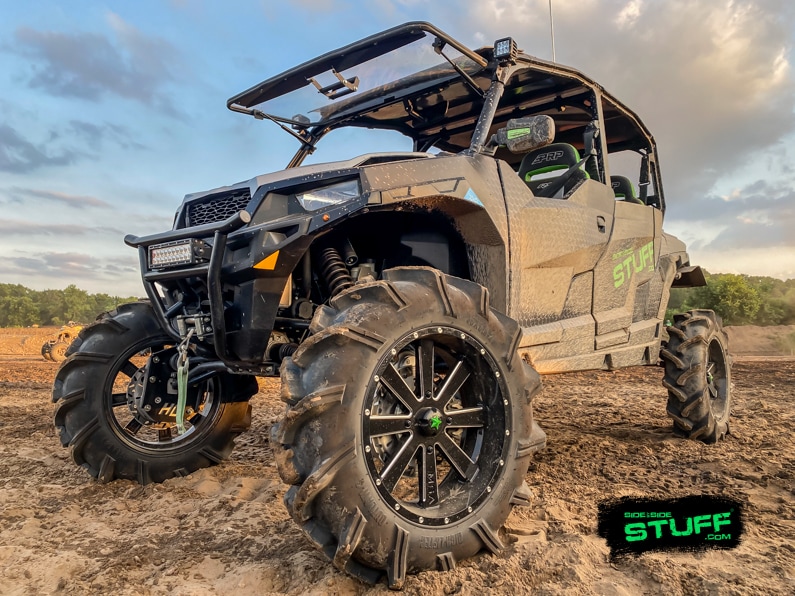
Types of UTVs and ATVs
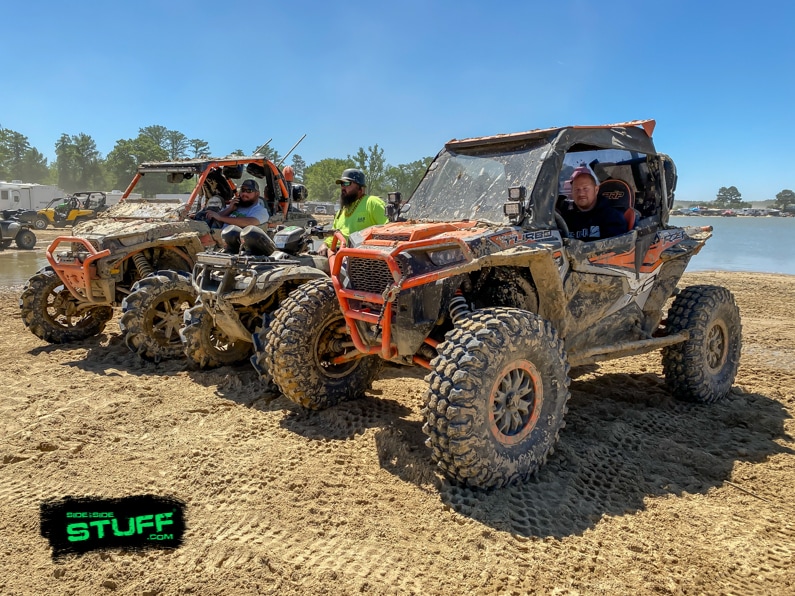
Recreation UTVs and ATVs
Excellent for casual riders who prefer cruising the country or hitting milder trails. Many folks with these types street legalize their units to run errands and other activities.
Sport UTVs and ATVs
Sport models have much more HP than other types and are used in racing. Some have a turbo that can power through extreme terrains like dunes, expert trails, deep mud bogs, etc. With the added HP, Sport ATVs are also built and tuned for better suspension and travel for a more stable ride at higher speeds.
Utility UTVs and ATVs
Utility vehicles are designed to be workhorses for their riders with options for towing and hauling larger payloads than sport or recreation models. As a flexible category, engines and bodies vary by size and function.
Crossover UTVs and ATVs
These are a perfect blend between work and play. You can complete tasks around the property, like taking down trees, and head to the trails for a ride afterward.
Are ATVs or UTVs better?
At Side By Side Stuff, we usually answer this question with: “Yes!” Because honestly, it’s a tricky question (and there isn’t a perfect answer). It all depends on what the rider needs. We’ll cover the usage/utility, cost, and safety differences.
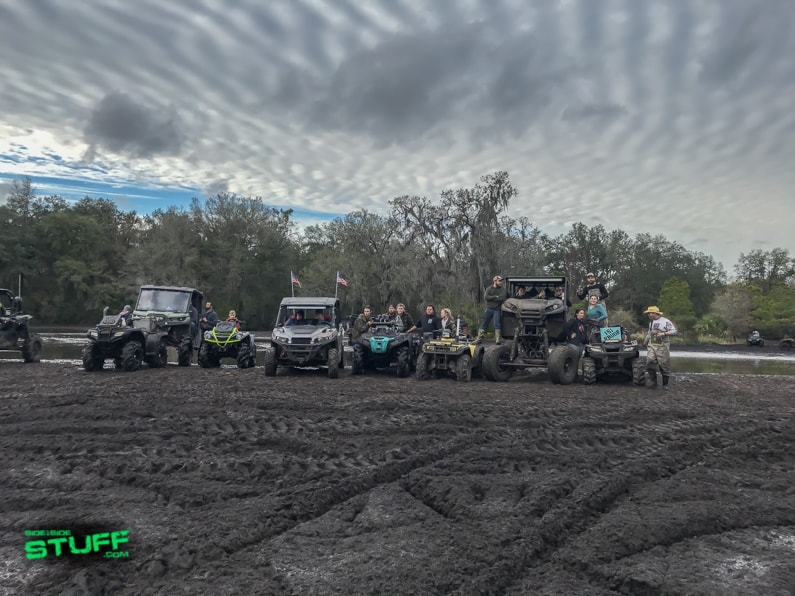
Are UTVs or ATVs better for hauling cargo?
If you’re not sick of the analogy, it’s time to compare motorcycle vs. car (again). By design, UTVs are generally larger than ATVs and can hold more equipment. With multiple configurations across brands and endless amounts of storage upgrades, UTVs typically win the battle on this one.
Of course, ATVs also have upgradeable racks and storage, but there’s much less space to attach them to your rig. Of course, for those that prefer to tow their gear, there’s always the option to add a trailer to a UTV or ATV.
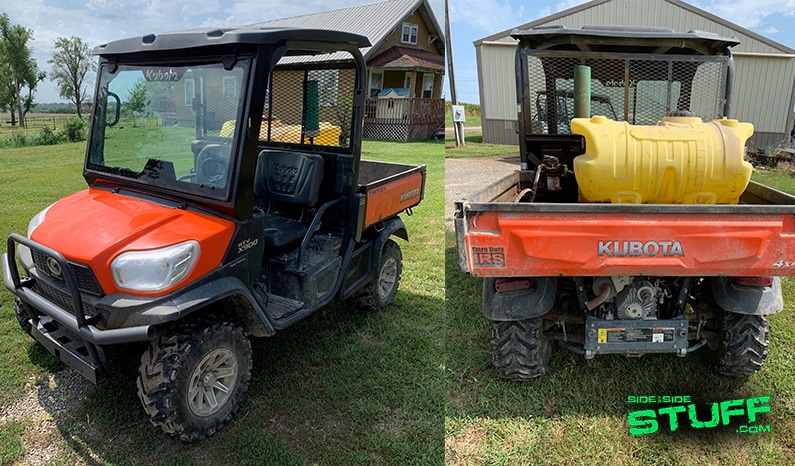
Is an ATV or UTV better for hunting?
Storage capacity aside, there are a few things to consider when choosing between a UTV or an ATV for hunting. An ATV is better for more narrow trails and roads because the wheelbase is not as wide, and typically they are more maneuverable.
On the other hand, some UTVs are available in electric models, which are dramatically quieter than gas-powered ones.
In either case, there are a ton of UTV hunting accessories and ATV hunting accessories like camo graphic kits that can make your time in the blinds the best it can be.
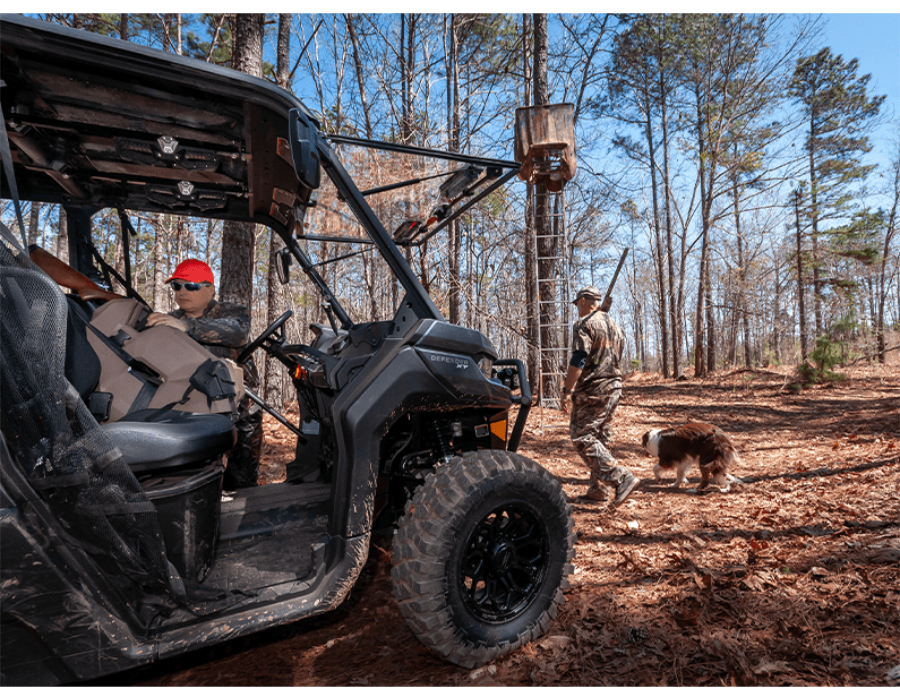
ATV vs. UTV: Which is better for off-roading?
Once again—that depends. Both ATVs and UTVs are very capable off-road. And, to fans of racing, mudding, and rock climbing events, they offer the same amount of excitement. It comes down to personal preference and the trails in question.
If you’re looking for a more car-like driving experience and literally going pedal-to-the-metal, the UTV ride will suit you more. However, if dirt bikes and motorcycles are what get your engine revving, an ATV’s bike-like handling is going to be better.
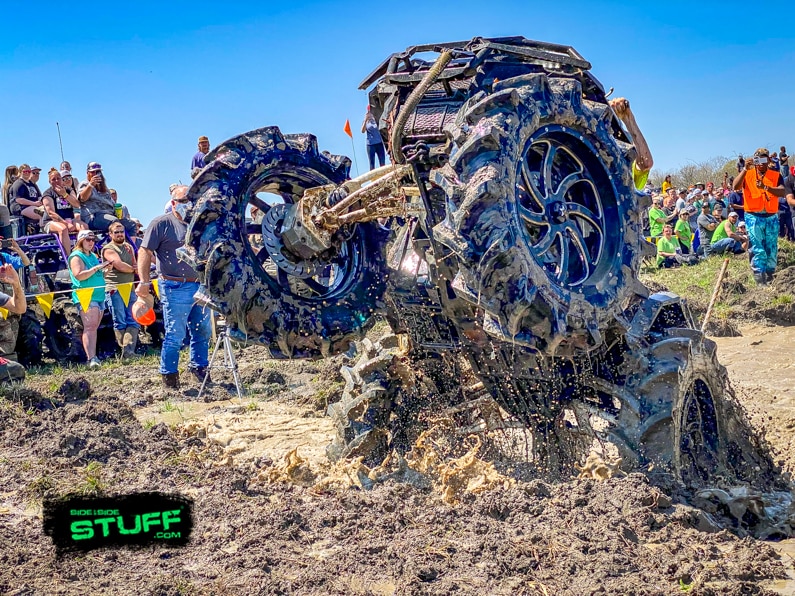
When it comes to maneuverability, it’s hard to beat an ATV offroad
Of course, it’s a lot easier to cut through narrow trails. But, in the really thick brush, sometimes it’s nice to have a little protection. UTVs offer more protection from dirt, debris, and branches when offroading, with a wide variety of windshields available.

Riding UTVs in cold weather
Although tires and snow plows are available for both ATVs and UTVs, this is one area where there’s a real, distinct difference between the two. Because a UTV’s chassis puts riders inside the cabin, dozens of accessories make riding in the winter months more manageable.
By sealing off the cabin with doors and adding a heater, riders can control the cabin’s climate—whereas, on an ATV, the best you can do is usually hand warmers, a good helmet, and winter jackets or bibs.

Are ATVs or UTVs safer?
IMPORTANT NOTE: Both are dramatically safer when riders wear helmets. SBSS recommends anyone—new or experienced—to invest in a sturdy, high-visibility helmet.
The simple answer is that they’re both perfectly safe and offer no risk—if you plan to keep it in the garage forever. But, for people who want to actually get out and ride, here’s what you need to know.
Based on safety features included, UTVs win. With seatbelts, doors, and other equipment, there’s less chance of a rider falling off or out of a UTV.
However, if we look at the numbers, they’re pretty much the same. So, at the end of the day, it comes down to education and common sense.
Riders who understand their equipment and its limitations are much less likely to get their vehicle into situations that could result in injury. And, if you never try to do a wheelie in the first place, you’re not going to nurse a wheelie-related injury.

How much does a UTV Cost? How much does an ATV cost?
Like most gas-powered machines, ATVs range in cost. Generally, you’ll find these stock models between $8,000 and $10,000. But, of course, the more upgrades you embark on, the more cash you’ll spend.
The cost of a UTV is a wide range. For example, some used side-by-sides can be purchased for around $3,500, while new, top-tier machines will go for well over $20,000.
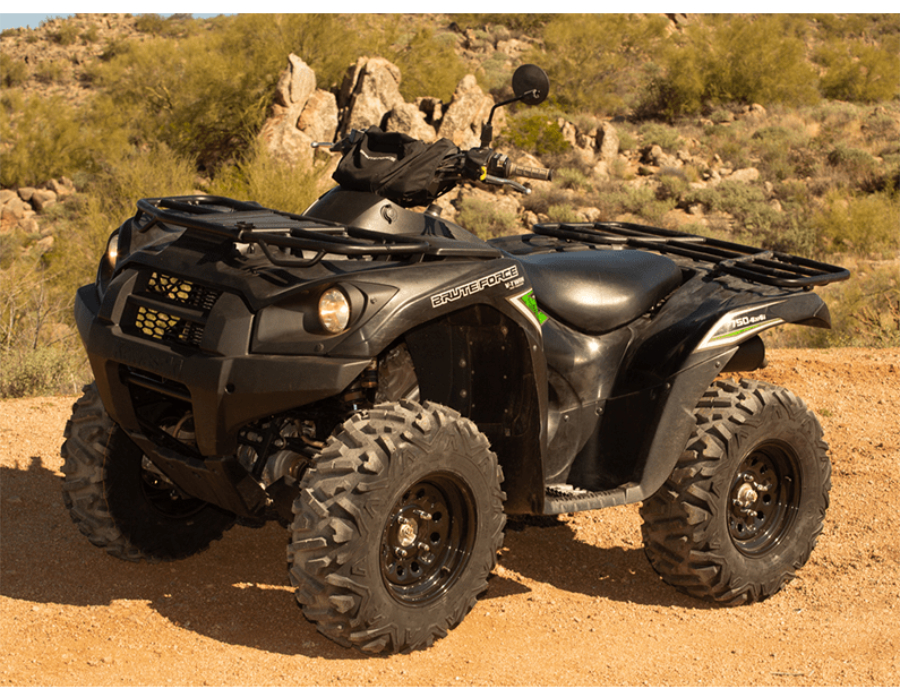
Most popular UTV and ATV manufacturers
- Can-Am
- Honda
- Kawasaki
- Polaris
- Yamaha
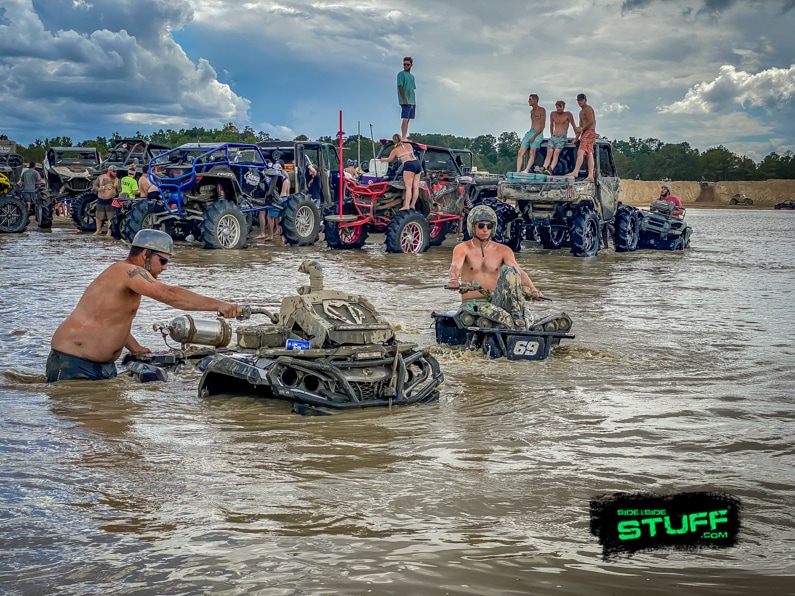
Best UTV upgrades
We asked Billy, or resident “know-it-most” to chime in on what the most popular upgrades are available for UTVs and ATVs. Here’s what he had to say:

Choosing a UTV or ATV
There is no right or wrong option regarding UTVs or ATVs. It’s totally about personal experience and expectations. In either case, you can build either machine into whatever you want it to be with the right parts and accessories←(link to home page). So, what will it be, an ATV or a UTV?


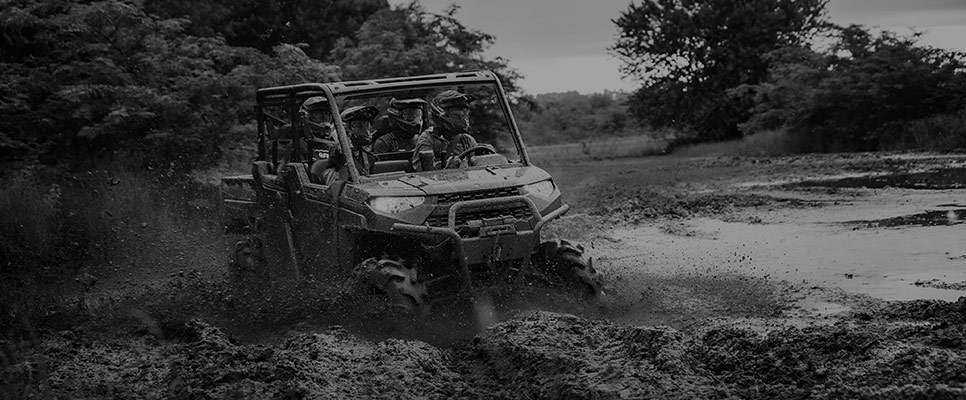

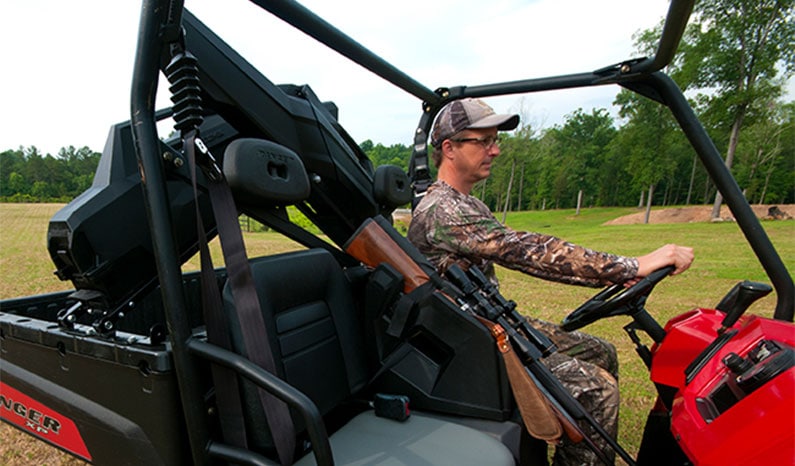

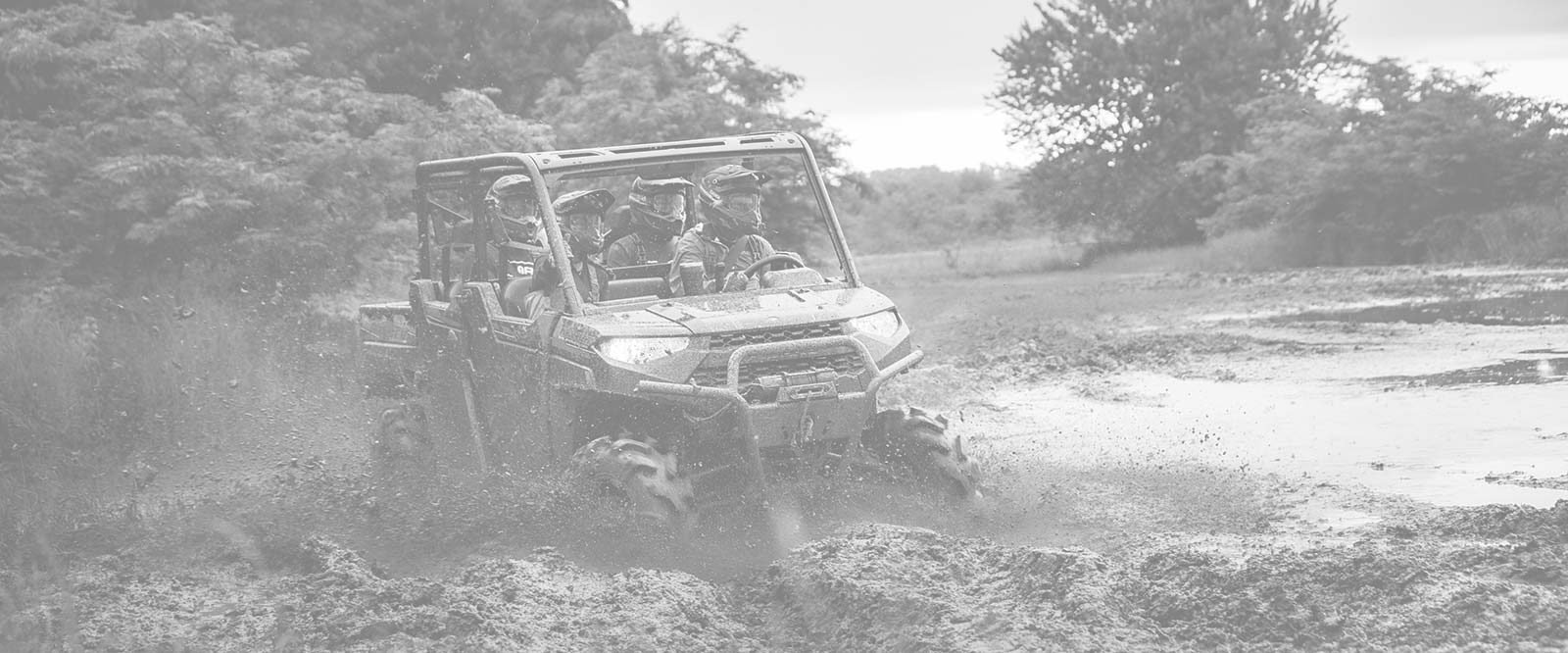
Comment section